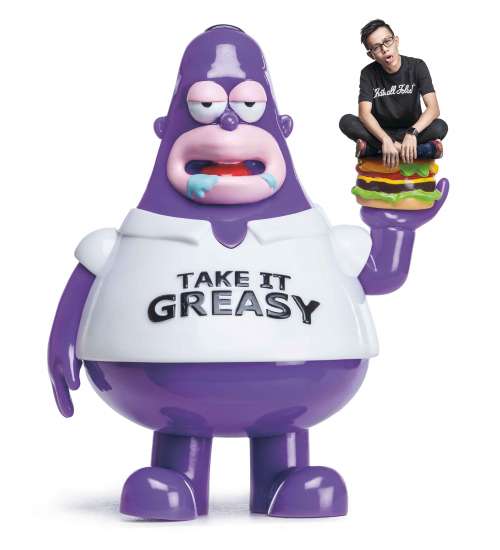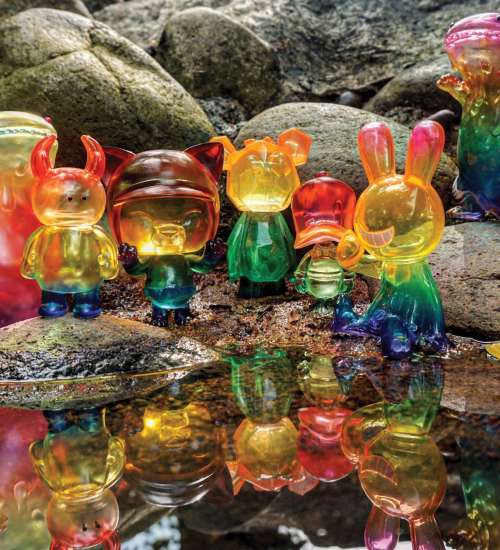Besides designs developed in house, they have also commissioned independent artists. “For collaborations, we like to have a say in the creative process right from the get-go. I find collaborations more fun, although someone has to be the bad person and make the decision at the end of the day.” One can only guess that the responsibility often lies in Mr. Koh.
Parodies or transformative art toys are often assured of some success because they tap into an existing pool of people who have expertise in a particular genre, Mr. Koh says, whereas original works are often a case of hit or miss. Despite this, he sees original works as important to building one’s IP. “We do not have a fixed formula at Flabslab. We make what we want. Every project is different.”
Flabslab toys, like those of their peers’, are not produced in Singapore. It doesn’t make economic sense to do so, Mr. Koh shares. “Most major manufacturers are in China, but we’ve made our in other countries, too.” Most toy studios do not own their manufacturing facilities, unless they are also in the business of producing for other studios, he adds.
Although there are variations, the creation of toys follow a very similar procedure. For XM Studio, it starts with a concept or a storyline that will determine the form and content of the finished figurine.
This concept is articulated in a 2D illustration or concept line art, typically a black-and-white sketch. The line art is turned into a digital file of a 3D model, which is then sent to 3D printers who will create the physical master prototype.
“We create multiple prototypes for painting and engineering before settling on the final version, which we send out to the manufacturing facility for production,” Mr. Bryan Tan, co-founder and business director, says. After conducting stringent stress and quality tests, the figurines are packed and shipped to the customers.
Pobber follows a slightly simpler routine. “The artist often begins with a 2D sketch, which we translate into a 3D model. Along the way, we discuss with the factory any concerns we have that may arise during production. They, in turn, advise us if something cannot be done, which sometimes sends us back to the drawing board. Like what Murphy said, things will go wrong in any situation if you allow them to, so I work hard to ensure that they do not,” says its founder, Mr. Jake Lee.
Mighty Jaxx works with different artists, its founder, Mr. Jackson Aw, reveals. Every collaborative project begins with the artist sending in his design proposal to the in-house design team.
The sketches are refined for 3D modelling and a prototype is eventually created, but artist gives each piece his unique style. Throughout the entire design process, Mighty Jaxx keeps the artists in the loop so that they can retain full creative control of the project.
This method works very well for Mighty Jaxx as they seek to preserve the artistic integrity of every piece while allowing them room to add their own touch to the end product. “The open communication also helps build a very conducive platform for creativity to surface,” Mr. Aw says.
The entire process from designing to manufacturing an art toy takes Mighty Jaxx anywhere from six months to a year before releasing them to the market. Making art toys is expensive, and the cost is still rising, according to Mr. Lee “Just to create a mold will set you back by a couple of thousand dollars. Then there are the usual overheads of running a studio. Although owning your own manufacturing facility is not needed, you definitely need manufacturing partners that you can trust to deliver your vision.”
There are manufacturers in China and Japan, as well as in places like Indonesia and Thailand. “Where you make them depends on what you want to get made,” Mr. Lee says. “For complicated designs you are likely to end up in China or Japan.”










 Back
Back
